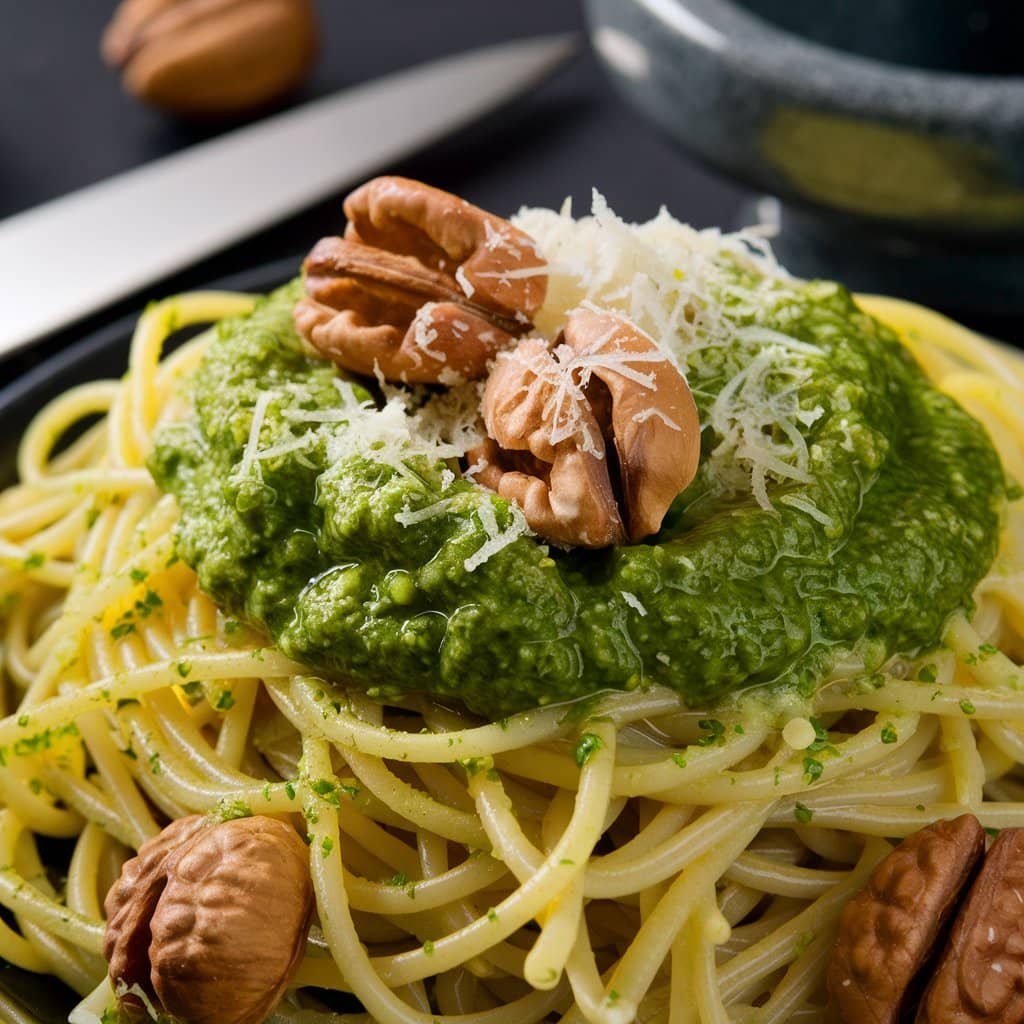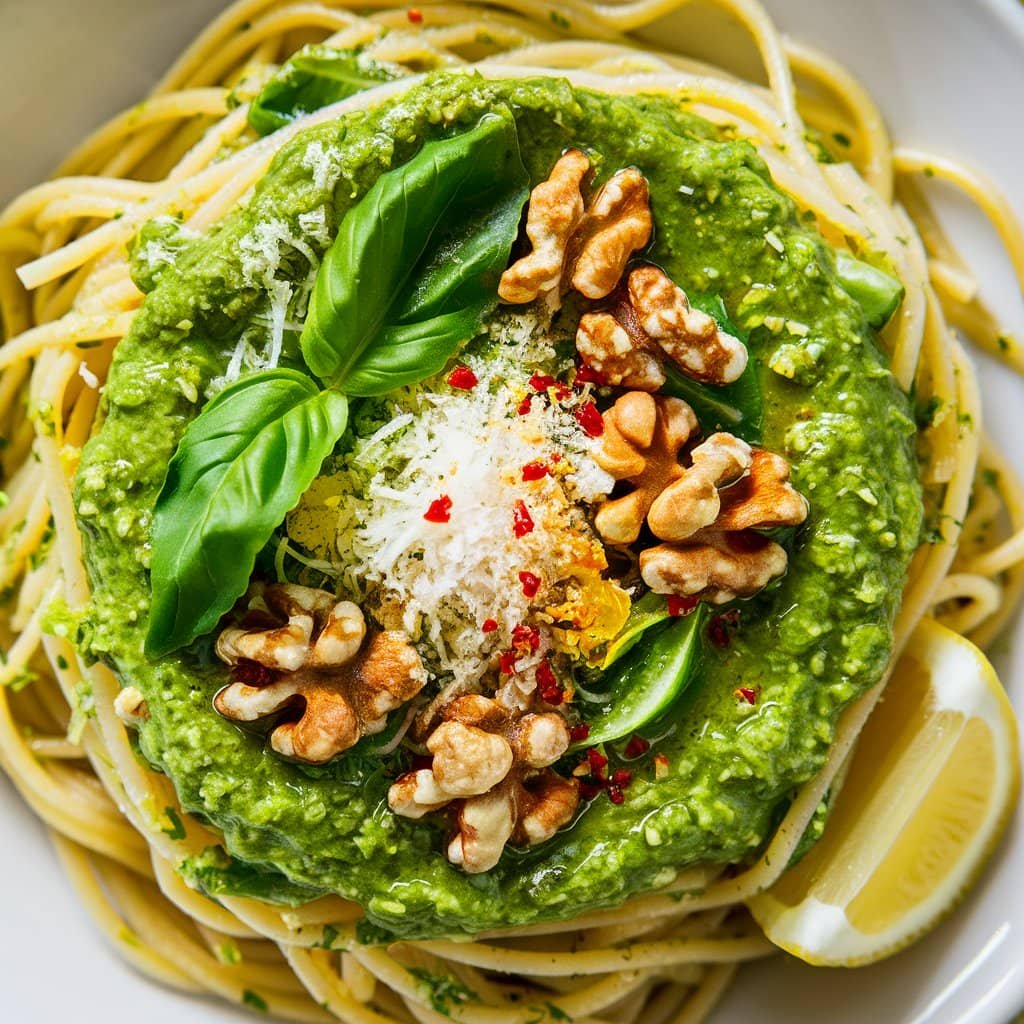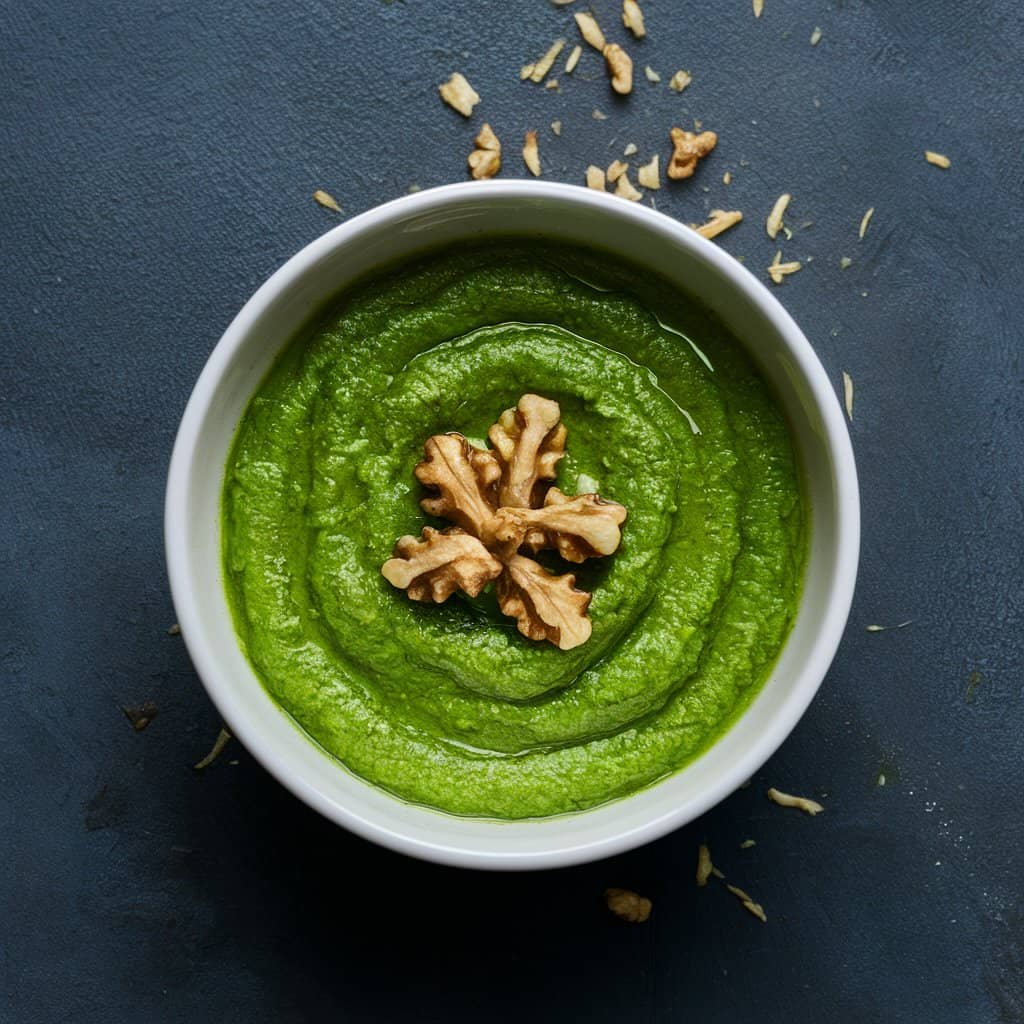Table of Contents
Introduction
Pesto, a classic Italian sauce, is a versatile and flavorful addition to any meal. While traditional pesto is made with pine nuts, did you know that you can create an equally delicious and nutritious version using walnuts? In this blog post, we’ll explore the world of walnut pesto, its benefits, and how you can easily make it at home.
How to Make Walnut Pesto at Home
Instructions and Directions
Making walnut pesto at home is simple and requires just a few ingredients:
Walnut Pesto
Course: SauceCuisine: ItalianDifficulty: Easy1
servings10
minutes5
minutes200
kcalIngredients
2 cups fresh basil leaves
1/2 cup walnuts
2 cloves garlic
1/2 cup grated Parmesan cheese
1/2 cup extra virgin olive oil
Salt and pepper to taste
Directions
- Toast the walnuts in a dry skillet over medium heat for 3-5 minutes, stirring frequently, until fragrant. Let them cool.
- In a food processor, combine the basil, cooled walnuts, garlic, and Parmesan cheese.
- Pulse the mixture a few times to roughly chop the ingredients.
- With the food processor running, slowly pour in the olive oil through the feed tube.
- Process until the pesto reaches your desired consistency, scraping down the sides as needed.
- Season with salt and pepper to taste.
Your homemade walnut pesto is ready to use!
What is Walnut Pesto?
Walnut pesto is a variation of the classic Italian sauce, replacing pine nuts with walnuts. The core ingredients remain the same: fresh basil, garlic, olive oil, and Parmesan cheese. The substitution of walnuts adds a unique flavor profile and a host of nutritional benefits.
Benefits of Using Walnuts in Pesto
Nutritional Powerhouse
Walnuts are packed with essential nutrients, including:
- Omega-3 fatty acids: These healthy fats support heart and brain health.
- Protein: Walnuts are a great source of plant-based protein.
- Fiber: The high fiber content in walnuts aids digestion and promotes feelings of fullness.
- Vitamins and minerals: Walnuts contain vitamin E, magnesium, and phosphorus.
Budget-Friendly
Pine nuts, the traditional choice for pesto, can be expensive. Walnuts offer a more affordable alternative without compromising on taste or quality.
Flavor and Texture
Walnuts bring a rich, buttery flavor to pesto, complementing the bright notes of fresh basil. Their slightly softer texture compared to pine nuts creates a smooth and creamy consistency.
Ways to Use Walnut Pesto
Walnut pesto is incredibly versatile and can be used in a variety of dishes:
- Pasta: Toss with your favorite pasta for a quick and flavorful meal.
- Sandwiches: Spread on bread for a gourmet sandwich or wrap.
- Vegetables: Use as a dip for raw veggies or drizzle over roasted vegetables.
- Meat: Serve as a condiment for grilled chicken, fish, or steak.
- Salads: Add a dollop to your favorite salad for an extra burst of flavor.
Storing and Preserving Walnut Pesto
To store walnut pesto, transfer it to an airtight container and cover the surface with a thin layer of olive oil. This helps prevent oxidation and preserves the bright green color. Refrigerate for up to one week or freeze for up to three months.
Serving Suggestions:
This versatile Italian sauce pairs well with a variety of dishes. Toss it with your favorite pasta, such as spaghetti, penne, or fettuccine, for a classic Italian meal. Use it as a dipping sauce for breadsticks, garlic bread, or pizza crust. Spoon the sauce over grilled or roasted vegetables, like zucchini, eggplant, or bell peppers, for a flavorful and healthy side dish. You can also use this sauce as a base for other Italian-inspired recipes, such as chicken parmesan, lasagna, or baked ziti.
Variations:
While this basic Italian sauce recipe is delicious on its own, you can easily customize it to suit your tastes or dietary preferences. For a spicier version, add a pinch of red pepper flakes or chopped fresh chili peppers. If you prefer a creamier sauce, stir in a splash of heavy cream or a dollop of ricotta cheese. To make the sauce more substantial, add cooked and crumbled Italian sausage or sautéed ground beef. For a vegetarian option, incorporate sautéed mushrooms, onions, or olives into the sauce.
Storage and Reheating:
This Italian sauce can be stored in an airtight container in the refrigerator for up to 5 days. To store the sauce for a longer period, transfer it to a freezer-safe container and freeze for up to 3 months. When ready to use, thaw the sauce in the refrigerator overnight and reheat it in a saucepan over medium-low heat, stirring occasionally, until heated through. If the sauce appears too thick after reheating, add a splash of water or broth to thin it out to your desired consistency.



Conclusion
Walnut pesto is a delicious and nutritious twist on a classic Italian sauce. By using walnuts instead of pine nuts, you can enjoy the benefits of a budget-friendly, flavorful, and versatile ingredient. Try making walnut pesto at home and discover the many ways you can incorporate it into your meals. Share your favorite walnut pesto recipes in the comments below!



























Leave a Reply